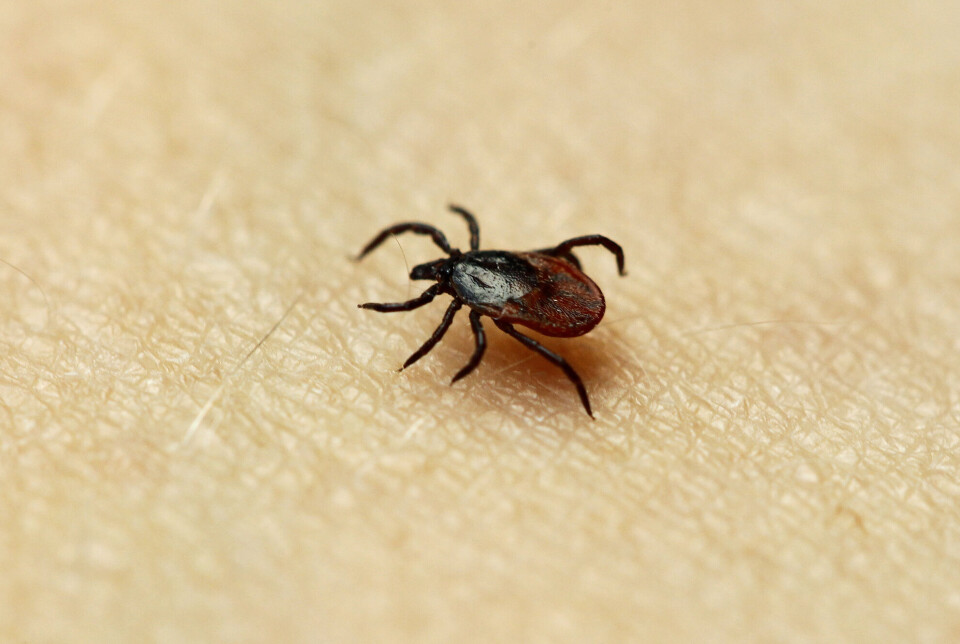
Ticks are thriving in Norway: Record number of Lyme disease cases so far this year
According to the Norwegian Institute of Public Health, there have never been as many reported cases of the tick-borne disease Lyme borreliosis in the first half of the year as in 2024.
A total of 175 cases have been reported to the Norwegian Institute of Public Health (NIPH) for the period from January to June. This is 16 more than during the same period last year, which was the previous peak for the six-month period.
The reason of the increase is difficult to pinpoint, says senior researcher Solveig Jore at NIPH.
“There are many factors at play,” she tells NTB.
Possible explanations
Temperature and humidity are crucial for a tick’s survival. The amount of time people spend outdoors and the clothing they wear also play a role.
“More people are likely being diagnosed because of increased awareness both among the public and doctors. Additionally, ongoing climate and environmental changes have affected the distribution of ticks and thus the spread of Lyme borreliosis,” says Jore.
Many are symptomless
Lyme borreliosis is the most common tick-borne disease in Norway. Even so, the risk of getting infected is only two per cent if you are bitten.
“And many of them don’t show many symptoms,” according to the researcher.
Some may experience flu-like symptoms and a red rash called Erythema Migrans. They should see a doctor, who will determine if antibiotics are necessary.
The blood-sucking critters can also carry the TBE virus, which stands for tick-borne encephalitis. The virus can cause very serious illness, and there is no cure, only a vaccine that can prevent it.
Where the virus is found
“The virus has a limited geographical distribution,” says Jore.
The virus occurs in Southern Norway from Flekkefjord and the west coast of the Oslofjord up to the old Hurum municipality, as well as from Vestby on the east coast of the Oslofjord to the Swedish border.
There were 113 cases of the TBE virus registered in Norway last year. Around 48,000 Norwegians received at least one dose of the vaccine, according to Jore.
In 2016, there were 12 registered cases of the virus.
How many people have been diagnosed with the TBE virus this year, NIPH will not disclose until the figures have been reviewed and quality assured. However, 80 per cent of those infected by the virus show no symptoms, and their own immune system fights off the infection.
“Everyone who becomes seriously ill is admitted to the hospital and receives supportive care. It’s wise to get the vaccine if you spend time in the coastal areas where the TBE virus is found and if you’re outdoors a lot and frequently get bitten,” says Jore.
‘Frequently’ means about a couple of bites a year.
More common abroad
The virus is more common in other countries, and you don’t have to go farther than Sweden to find higher rates. Last year, the number of reported cases was nearly three times as high per capita in Sweden as in Norway.
The advice to avoid tick bites is straightforward: Walk on paths and not in tall grass, cover your legs with clothing, and pull your socks over your trouser legs.
“Insect repellent can also have an effect. And check your body carefully after being outdoors,” says Jore.
If a tick has bitten you, you should remove it as quickly as possible and monitor your body.
“A small rash is normal, but if it spreads or you develop other symptoms, it's wise to contact your GP,” she says.
———
Translated by Alette Bjordal Gjellesvik
Read the Norwegian version of this article on forskning.no





































